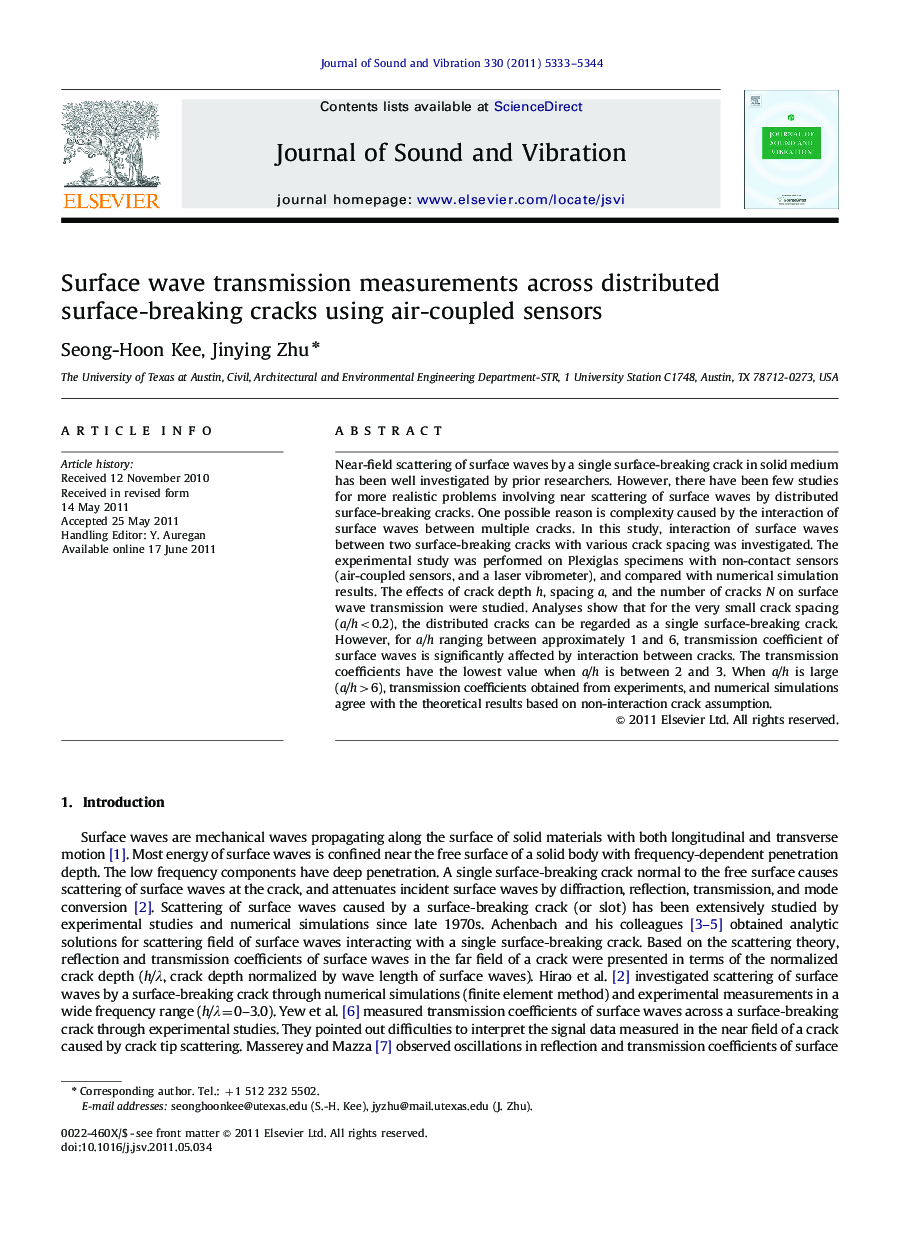| کد مقاله | کد نشریه | سال انتشار | مقاله انگلیسی | نسخه تمام متن |
|---|---|---|---|---|
| 288648 | 509636 | 2011 | 12 صفحه PDF | دانلود رایگان |

Near-field scattering of surface waves by a single surface-breaking crack in solid medium has been well investigated by prior researchers. However, there have been few studies for more realistic problems involving near scattering of surface waves by distributed surface-breaking cracks. One possible reason is complexity caused by the interaction of surface waves between multiple cracks. In this study, interaction of surface waves between two surface-breaking cracks with various crack spacing was investigated. The experimental study was performed on Plexiglas specimens with non-contact sensors (air-coupled sensors, and a laser vibrometer), and compared with numerical simulation results. The effects of crack depth h, spacing a, and the number of cracks N on surface wave transmission were studied. Analyses show that for the very small crack spacing (a/h<0.2), the distributed cracks can be regarded as a single surface-breaking crack. However, for a/h ranging between approximately 1 and 6, transmission coefficient of surface waves is significantly affected by interaction between cracks. The transmission coefficients have the lowest value when a/h is between 2 and 3. When a/h is large (a/h>6), transmission coefficients obtained from experiments, and numerical simulations agree with the theoretical results based on non-interaction crack assumption.
► Surface wave transmission Tr across multiple surface-breaking cracks is studied.
► Tr depends on crack depth h, spacing a, and number of cracks N.
► Tr reaches the lowest value when a/h is between 2 and 3.
► Cracks can be regarded as a single crack for a/h <0.2.
► Non-interaction theory applies for cracks with a/h>6.
Journal: Journal of Sound and Vibration - Volume 330, Issue 22, 24 October 2011, Pages 5333–5344